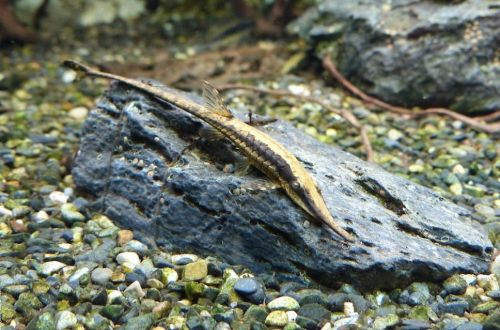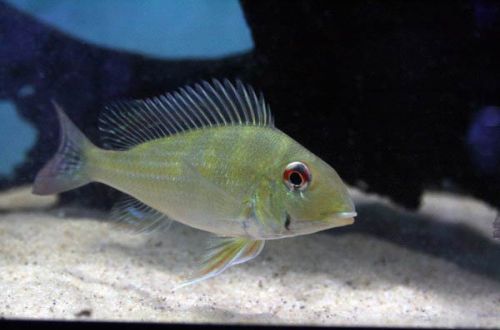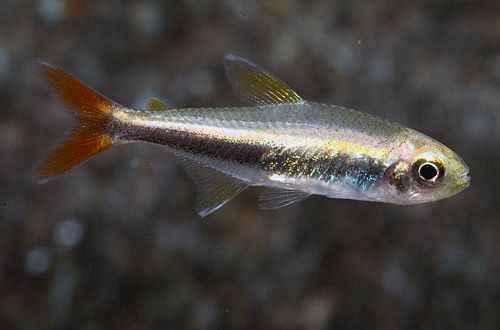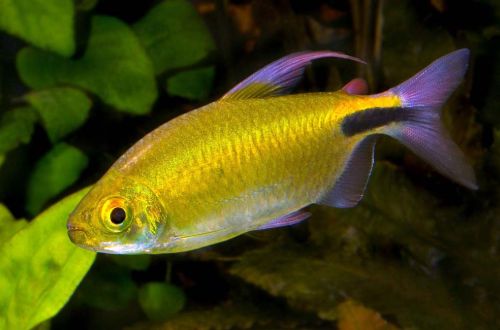
Catfish-twig
Branch catfish or Stick catfish, scientific name Farlowella vittata, belongs to the family Loricariidae (Mail catfish). The fish has a non-typical body shape for catfish and outwardly really resembles an ordinary twig. It is considered not easy to keep due to high requirements for water quality and a special diet. Not recommended for beginner aquarists.

Contents
Habitat
It comes from South America from the Orinoco River basin in Colombia and Venezuela. It inhabits sections of rivers with a slow flow, floodplain lakes with a large number of snags, aquatic vegetation, submerged branches, tree roots. Prefers to stay along the coastline.
Brief information:
- The volume of the aquarium – from 80 liters.
- Temperature – 24-27°C
- Value pH — 6.0–7.0
- Water hardness – 3–10 dGH
- Substrate type — stony
- Lighting – moderate
- Brackish water – no
- Water movement – little or no
- The size of the fish is up to 15 cm.
- Nutrition – algae-based food
- Temperament – peaceful
- Content alone or in a group
Description
Adult individuals reach a length of up to 15 cm. The appearance of the fish is quite bizarre and resembles another related species – Farlovell. Catfish has a strongly elongated and thin body, especially in the tail section, and an elongated “nose”. The body is covered with hard plates – modified scales. The coloration is light with two diagonal black stripes on the sides. Due to the similar body shape and pattern, this type of catfish effectively camouflages itself among snags, avoiding the attention of predators. Males, unlike females, have a noticeably longer and wider “nose”.
Food
Herbivorous species, in nature feeds on algae, as well as small invertebrates inhabiting them. The latter are an accompanying product to the main plant-based diet. In a home aquarium, dried algae should be fed in the form of flakes, granules, pieces of fresh green vegetables (cucumber, cabbage, spinach, etc.), as well as a certain amount of frozen brine shrimp, daphnia, bloodworms. If allowed to grow naturally in an aquarium, algae will be a great addition to your diet.
Maintenance and care, arrangement of the aquarium
The optimal size of an aquarium for one or two fish starts about 80 liters. They are inactive and prefer to stay among the decorative elements. The recommended design should resemble an overgrown section of the river with oven substrates, littered with driftwood. The lighting is subdued, plants floating on the surface will become an additional means of shading.
The branch catfish is very sensitive to the quality and composition of the water. Gentle but effective filtration along with a weekly replacement of part of the water with fresh water are a must. In addition, standard aquarium maintenance procedures should be carried out regularly. At a minimum, remove organic waste (uneaten food residues, excrement, etc.) that, during the decomposition process, can unbalance the nitrogen cycle.
Behavior and Compatibility
Peaceful calm fish, compatible with other non-aggressive species. Large and overly active tankmates should be avoided, especially those that also eat plant foods. Catfish-stick is not able to compete with them. Small flocking tetras and cyprinids, such as neons and zebrafish, will become excellent neighbors.
Intraspecific relationships are built on the dominance of males in a certain territory. However, even with a lack of space, their rivalry will not result in a skirmish.
Breeding / breeding
In favorable conditions, the fish readily breed. Problems arise only with the preservation of the brood. With the onset of the mating season, the male begins courtship, inviting females to his area of u6bu10bthe aquarium. When one of the females is ready, they lay several dozen eggs on a vertical surface: a snag, stem or leaf of a plant. The male remains to take care of the clutch, during which time other females can replenish it with eggs. The incubation period lasts XNUMX–XNUMX days, but due to the fact that in the clutch there are eggs from different females that appeared there at different times, the process of the appearance of fry can be extended for several weeks.
The fry that appear need microscopic algae. With a lack of food, they quickly die. Algae can be grown in advance in a separate tank on driftwood under bright light, where it will naturally appear. This “overgrown” snag is subsequently placed in the main tank not far from the masonry.
Fish diseases
The cause of most diseases is unsuitable conditions of detention. A stable habitat will be the key to successful keeping. In the event of symptoms of the disease, first of all, the quality of the water should be checked and, if deviations are found, measures should be taken to correct the situation. If symptoms persist or even worsen, medical treatment will be required. Read more about symptoms and treatments in the Aquarium Fish Diseases section.





